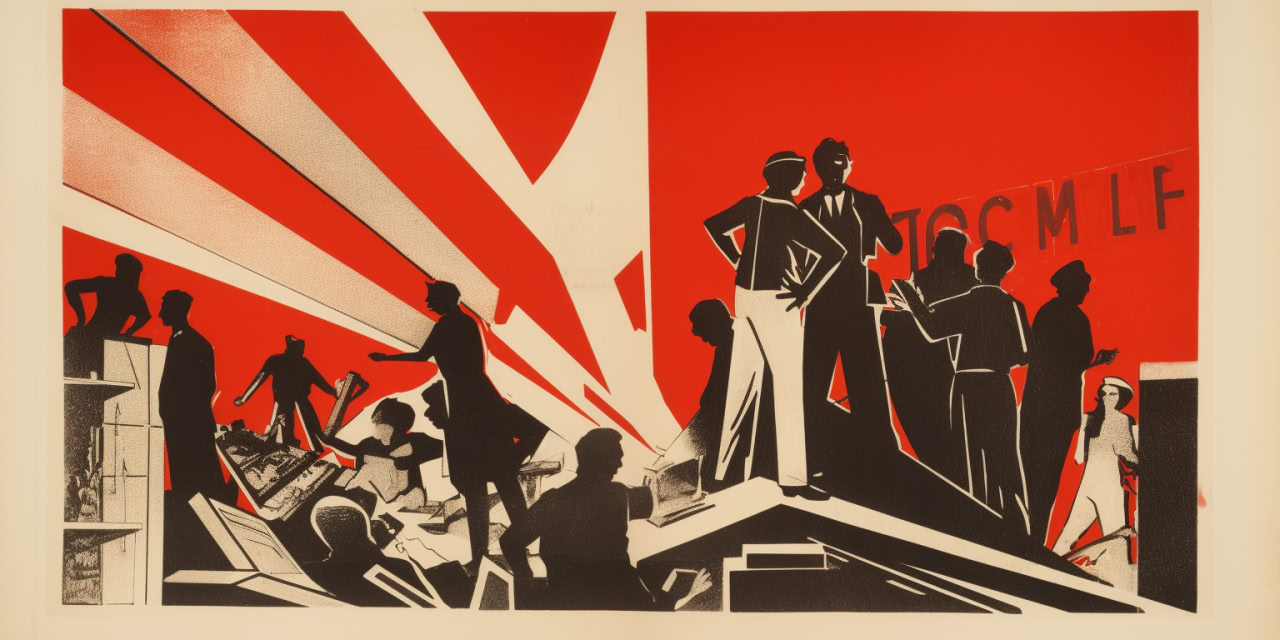Where is cooperativism heading?
A primary evaluation of current trends in cooperativism

Preliminary mapping of tendencies in workers' cooperativism
In our first mapping of tendencies we have identified:
- Corporatist models promoted both by the ICA and by a part of the social and entrepreneural fabric. These models propose to overcome worker cooperativism through forms of ownership that counter-balance the weight of workers or directly hand over ownership to a trust governed by stake holders and independent directors.
- New Cooperativist and Radical Cooperativist models, converging with the Maximalist Cooperativism of this blog and its surrounding environment.
We have not analyzed platform cooperatives because it seems that their cycle - which was at its peak eight or nine years ago - can now be considered completed. There are few people who believe that such a model, in which an application employs an algorithm that distributes orders in an automated way among a group of atomized workers, can form the basis of a community or a resilient economy... or even form part of a desirable future.
Cooperative models matter
The debate over cooperative models is not an ideological question, but a rather fundamentally practical one. The cooperative model determines things such as who is the owner, who makes the decisions, what collective goals and what relationship with the larger community the cooperative will have. In other words, the cooperative model actually designs both a way of working and a way of living and relating to the environment.
Worker cooperativism is at a critical moment in Europe. The reason why we continually point out that the ICA's policy is aimed at denaturalizing worker cooperativism is because the consequences can be felt everywhere on the continent. The law created in Portugal under the dictates of the ICA, in which the existence of worker cooperativism is not even acknowledged, coupled with the European Cooperative Society law, which forces worker cooperative societies to be equated with joint-stock companies, are recurrent examples. But the desert of cooperativism of Eastern Europe is even more striking.
This is true even in Spain where, according to the data of the Ministry of Labor, since 2014 between 1,004 and 1,315 worker cooperatives are constituted each year. More than 80% of the total number of cooperatives created each year.
But the managerial and neutralist model of the ICA mortgages the future here too. If we refer to the year 2002, the year when the first Spanish maximalist cooperative was founded, we would find that according to the statistics of the same Ministry, the survival rate of worker cooperatives is at a very low 9%.
And the fact is that cooperative models matter a lot. Also for survival.
The underlying moral divide
In the end, the underlying key question is a moral one: that is, what articulates human community in general and thus what sustains both communitarian life and the feeling that one lives their life in a way that contributes to society and thus is meaningful due to its capacity to get one to look beyond oneself.
There are two possible ways to respond: through work or consumption (a type of response that has recently been broadened to include consumption related to the care sector).
Consumption is individual even when the provision and purchase is made with others. The community model based on consumption is therefore based on an ideal of the individual who, if he or she allies with others, it is for the sake of others:
- If one allies oneself with others, the purpose is to be served, looked after and/or cared for and
- Operates under the belief that choosing consciously what to consume is an adequate form of commitment to improving society and the surrounding environment.
Any community built on this conception of the individual as a sovereign consumer, dependent in the end on a supplier, will necessarily be mercantile and based on exchange, placing itself somewhere between the time bank, the consumer group and the buying group.
But work is something else. It is first and foremost social, and in its generic form, constitutes a contribution, whereby personal autonomy becomes the basis of a very different type of community in which:
- People rather than individuals make up the community. People define themselves in relation to their relationships with others, they do not define themselves in isolation.
- They interact in order to do something collectively, not for others to do it for them.
Choosing between the centrality of consumption and that of work thus leads to two opposing social, community, labor and human models: individual passivity versus collective doing, network of individuals versus community of people, contribution versus exchange, dependence versus autonomy, narcissism versus commitment.
Work, property, commons and the cooperative model
These are not abstract principles. The recognition -or not- of the centrality of work is raised in the basic questions that all promoters of a cooperative must ask themselves and marks the difference between some cooperatives and others even in right-to-use housing cooperatives for retirees.
That is what is condensed when defining cooperative ownership. If worker ownership is diluted, the alignment between collective labor and the cooperative commons disappears. And that is the key to cooperativism because without that alignment it is not possible to recompose the community. Neither the work community nor the wider community in which the cooperative is rooted. The denaturalization of the worker cooperativism is a drill placed in the pillar of cooperativism in order to enact a supposed social healing.
And that is what the revivification of the original cooperative principles -which are not those of consumer cooperativism and the ICA- through the most ambitious cooperative expressions of our time, be they new, radical or simply, maximalist, responds to.
